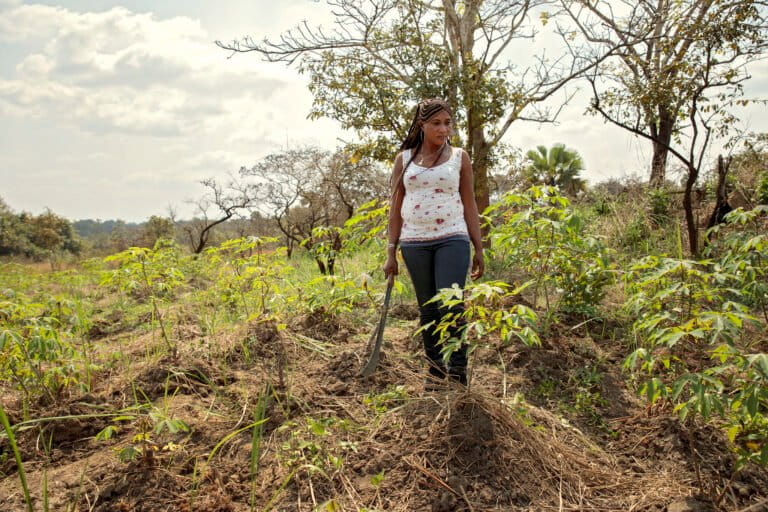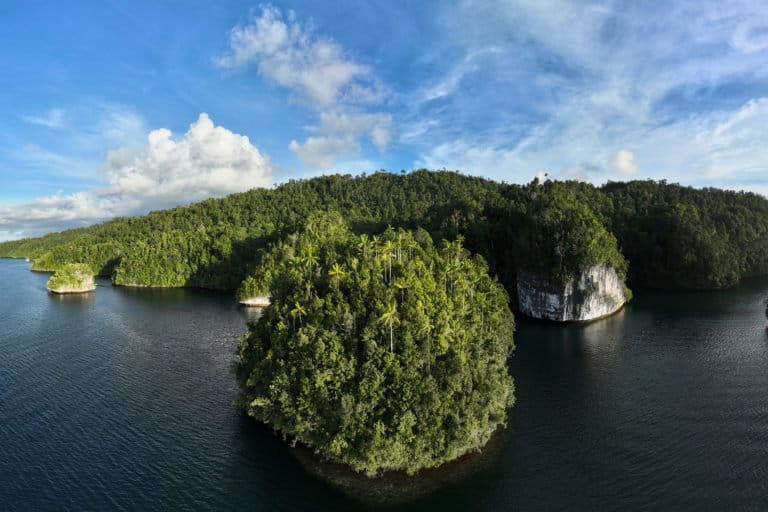'Wabi-sabi' is a world view about finding beauty in nature’s imperfections. It perfectly describes pastoralism in northern Kenya – where nomadic livestock herders scrape out a living by moving their…
In the village of Tarapacá, a group of women are working to strike the perfect balance between using the natural resources of the Amazon rainforest for income and protecting this…
Crucial industries and supply chains worth billions of dollars are threatened by impacts from hydropower development along the Mekong River, according to a new report from WWF. The report reveals…
COLOMBO — Sri Lanka is a nation where agriculture is a pivotal factor of the country's economy. However, the past two years were bleak for the agriculture sector following the…
Meet the rural farmers in southeastern Spain fighting the encroaching Sahara Desert through regenerative agriculture and landscape restoration.
On a fateful day in 2019 that is etched into the memories of local residents, the tranquility along Kenya’s Lake Victoria shores was shattered by an overwhelming surge of water.…
Seaweed, a type of algae that grows at the bottom of oceans and rivers, is often used by some local Indigenous communities in Bangladesh. And in recent years, a few…
SOUTH PAGAI, Indonesia — A white coastal beacon stood in place against the surf as gales hurtled across the Indian Ocean here off South Pagai, one of the Mentawai Islands…
Salinity intrusion triggered by different factors, including sea-level rise, commercial shrimp cultivation, and decreased upstream transboundary water flow, have directly affected agriculture in Bangladesh’s southern coastal districts in Bangladesh, some…
“This here is really great. I feel so good! I’m not stressed, and I’m not sad. When I’m here in the garden, everything is good,” says Waldir Francisco de Almeida,…
Emmanuel Eku turned to agroecological techniques to revive the exhausted soil on a plot of land in his hometown in southwestern Cameroon. Over five long years, he worked to restore…
When the sustainable development community gathers in New York on September 18-19 it would do well to answer an important call. Our ocean is calling for our help — and…
The planet’s Indigenous peoples are valued as Earth’s best stewards, protecting forests and other ecosystems holding vast carbon stores. But governments offer insufficient aid to meet the extreme climate threats now buffeting traditional communities.
PALAWAN, Philippines — On Aug. 8, 2013, Fernando de Chavez, along with more than 400 farmers and advocates, stormed a Golden Rice field trial site in Pili, a town in…
"The last 20 years have taken their toll on our forests, with increased deforestation and the sale of our land by government decision-makers cutting us off from our main means…
It’s long been known that many people depend on the world’s single largest mangrove forest, the Sundarbans, for their livelihoods, as the forest naturally provides resources including fish, crabs, honey…
Lomwé and Macua communities in Mozambique’s Zambezia province traditionally harvest wild mushrooms to eat alongside staples like cassava. Conservationists are working with hundreds of Indigenous women there to commercialize the…
A new study identified the presence of up to seven transgenic genes in single seeds of traditional, or “creole” corn from more than 1,000 samples collected in 10% of the towns in Brazil’s Caatinga.
A pan-African coalition of farmers, fishers and others meeting this week in the Democratic Republic of Congo will make the case for reorienting food production systems and agricultural policy across…
“After we finished ploughing, we would bathe the cows and then relax in the field playing flutes,” said Jero Dodo, who has farmed the rice terraces of Tabanan, Bali, since…
ILOILO, Philippines — In the mountainous village of Jayobo in the central Philippines, internet and mobile connectivity are spotty. The nearest town center is an hour's drive along a rough,…
Once a nursery for marine life, Guanabara Bay in Rio de Janeiro is now dying from the dumping of thousands of liters of sewage into its waters; artisanal fishermen now survive by picking up the garbage that floats in the bay.
BEN GUERIR, Morocco — Moussa Bouray sifts through hundreds of soil samples on the shelves of his lab that that will undergo analysis for nutrients: nitrogen, potassium, and especially phosphorus.…
LOS BAÑOS, Philippines — Built on wooden stilts and tied to endemic bangkal trees (Nauclea orientalis) are the homes of the Manobo Indigenous tribe, seemingly floating on the waters of…
TRA VINH, Vietnam — In the heat of Tra Vinh's dry season, rice farmer Thach Ren stands on a recently harvested field holding a smartphone. The once lush and green…
Every Friday at 7:30 a.m., María Isabel Aguilar sells her organic produce in an artisanal market in Totonicapán, a city located in the western highlands of Guatemala. Presented on a…
Marisol Villalobos has a routine with her breadfruit trees. Nearly every morning, as the sun is just cresting the horizon, she drives to her groves nestled in the mountains of…
EBRO DELTA, Spain — Perched on an oyster and mussel farming platform in the middle of Fangar Bay, Vacile Cotirlet works with the assured movements that come with two decades…
DHAKA — The Bangladesh government is ramping up efforts to boost populations of commercially important freshwater fish species, including captive breeding of species at threat of extinction. Fish like tengra,…
A recent study found that locally managed marine areas in Fiji strengthened the mechanisms believed to advance conservation efforts but ultimately led to few social, economic or even ecological benefits.…


































































